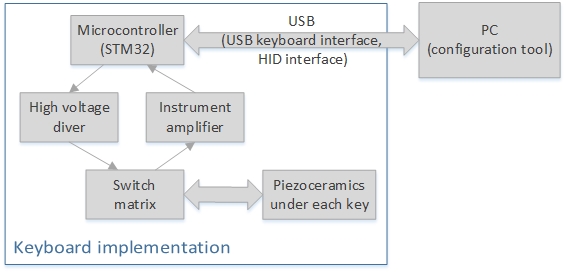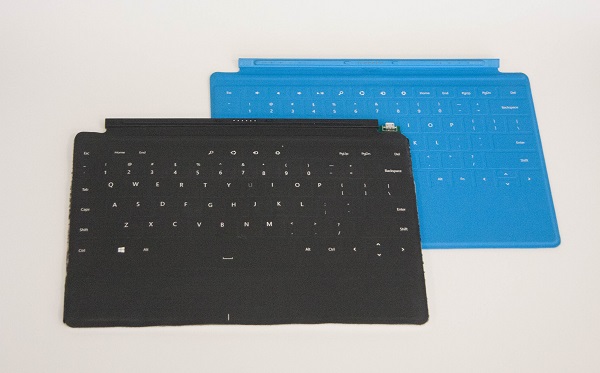Touch typing on touch cover
Jul 7, 2015Co-author: Darren Edge, Leah Findlater, Hong Z. Tan
My contribution:
- Invent a mechanical structure to use isolated piezoelectric ceramic as actuators to provide haptic feedback for keys on a 3mm-thick-keyboard independently.
- Mechanical structure, control circuit, and firmware design and prototyping.
- Design and conducting a user study based on the keyboard to evaluate users’ experience of typing with this design.
Related work on this keyboard is published in Proceedings of IEEE World Haptics Conference (WHC 2015), you can find out more information here
I received a patent for this design: “Hong Z. Tan, Zhaoyuan Ma & Chen Zhao. LOCALIZED KEY-CLICK FEEDBACK. WO/2014/186428, published 11/20/2014, filed 05/14/2014.”
People prefer Microsoft Type Cover rather than Touch Cover regardless of the thickness difference, due to Type Cover provide a better feeling of haptic feedback. Although this Cover shares the exact same appearance and dimension with other Touch Covers, everything inside has been pulled out and replaced by a totally different structure. Piezoelectric actuators are used to simulate physical keyboards, which means to create a sense of click under the certain finger that is pressing down. The study shows that people type faster and make fewer errors when they type on this kind of key-click as compared to just sound feedback.

System block diagram

Our implementation: black. Original Touch Cover: blue

Sideview

The inside view of the keyboard structure (modified version for user study)
Keyboard Feature:
- Same form factor as Microsoft Touch Cover.
- Isolated haptic feedback under each key.
- Using piezo ceramic for both sensing and actuating.
- Haptic feedback delay: 40.2ms.
- Standard USB keyboard interface (through MicroUSB connection).
- With configuration tool to turn on/off haptic feedback or change the feedback waveform.
User Study Take Away:
- Haptic feedback improves typing speed and reduces errors
- Audio feedback helps, but only if there is no haptics
- Haptic feedback alone is superior to audio feedback alone
- Users prefer localized haptics, but global helps home positioning
Special thanks to Magnetro Chen for his help!
I proceeded a user study with 24 participants, more than 60 hours in total.